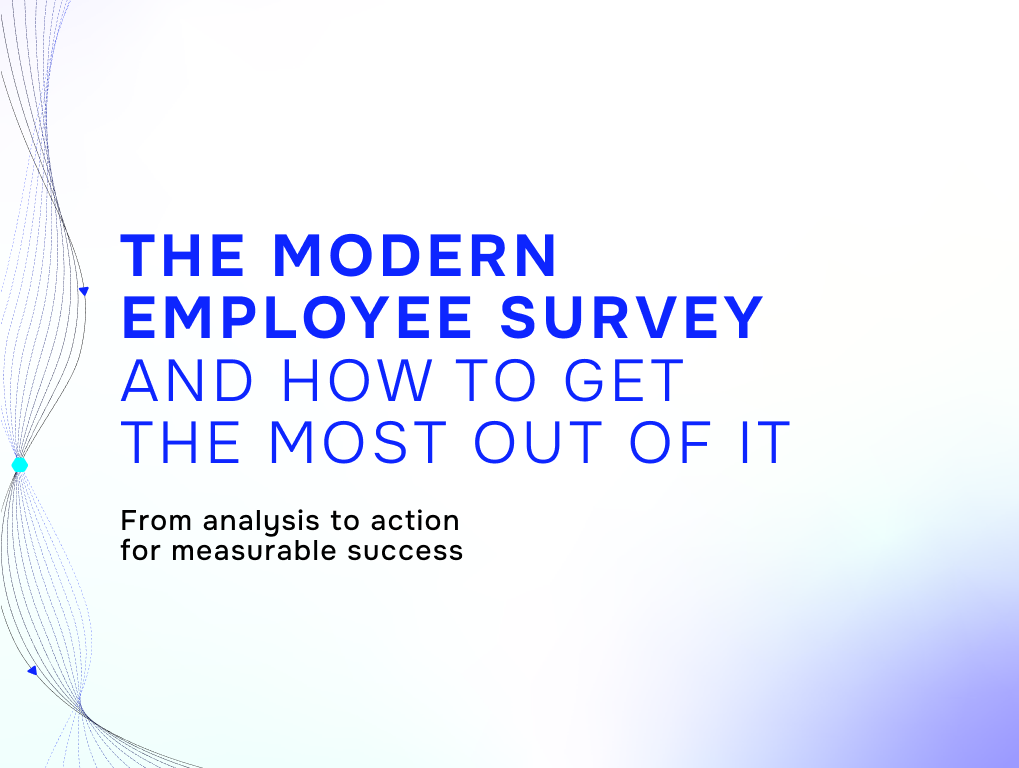Change management is not easy. It is a conversation between those leading the change effort and those who will implement it.
Every organization needs an effective system to understand how ongoing change management processes are evolving over time to optimize organizational change management key performance indicators (KPIs). Understanding these KPIs is essential to ensuring the smooth transition of changes within the organization, while also being able to identify when they are not working.
In this post, we will look at what you need to know about change management KPIs, including how to monitor and measure them for the best results.
What is organizational change management?
What are KPIs for change management?
5 key change management KPIs.
How to measure the impact of your change initiatives.
Benefits of implementing organizational change management KPIs.
What is Organizational Change Management?
Organizational change management is the process of managing organizational changes. It includes the processes and tools used to manage the people side of change within an organization. Change management aims to help organizations successfully manage organizational transformation by minimizing disruptions and maximizing employee engagement and productivity.
There are three essential components to successful organizational change management. First of all, stakeholder engagement is critical to the success of any organizational change initiative.
Secondly, change management planning ensures that the right people are involved in the change effort, understand their roles and responsibilities, and have the resources they need to succeed.
And finally, change management execution and measurement ensures that the changes are implemented effectively and efficiently, with minimal disruptions to business operations.

What are KPIs for change management?
There are several key performance indicators that can be used to measure the success of an organizational change management initiative. These change management KPIs can be categorized into four main categories:
1. Transition KPIs: these KPIs measure the successful implementation of changes to business processes, organizational structures, or business models. Examples of transition KPIs include metrics such as project completion rate, schedule adherence, and cost savings.
2. People KPIs: they measure the impact of changes on employees and other individuals within the organization. Examples of people KPIs include employee satisfaction, turnover rate, and training completion rate.
3. Performance KPIs: these KPIs measure the impact of changes on overall organizational performance. Examples of performance KPIs include metrics such as profitability, customer satisfaction, and market share.
4. Sustainability KPIs: they measure the long-term success of an organizational change initiative. Examples of sustainability KPIs include metrics such as employee retention, customer loyalty, and product/service quality.
5 key change management KPIs
To ensure the success of a change management program, it is essential to have an effective set of KPIs in place to measure progress.
When it comes to change management, there are a few key performance indicators that you should keep an eye on. Here are five of the most important change management KPIs:
1. Employee engagement (People KPI) – Do your employees seem engaged with the changes? Employee engagement is critical to successful change management.
2. Turnover rate (Sustainability KPI) – Does your organization have a high level of turnover? Do you have the right people in place and the necessary resources lined up?
3. Implementation success rate (Performance KPI) – How successful has the implementation of changes been so far? Are there any areas that need improvement?
4. Stakeholder satisfaction (Sustainability KPI) – Are your stakeholders happy with the changes? Keeping them satisfied is essential to maintaining support for the changes.
5. Business outcomes (Performance KPI) – Ultimately, the goal of change management is to improve business outcomes. Are the changes you are making positively impacting key metrics such as revenue, profitability, or customer satisfaction?
By better understanding these change management KPIs, you can determine what’s working and what needs improvement. Doing so will help you measure progress toward success and make necessary adjustments along the way.
Strategic change management requires a great deal of focus and effort to ensure successful implementation. With an effective set of change management KPIs in place, you can track your company’s performance over time as it works towards achieving its objectives.

How to measure the impact of your change initiatives
A well-managed approach to change management needs to include planning and implementation strategies aligned with the organization’s goals and objectives.
Several key tools can help organizations measure and monitor change management progress and performance.
- Interviews: they can be used to collect feedback on change management KPIs, although they can be highly time-consuming, which can be an issue when trying to obtain feedback from a large group of people. Interviews require specific skills to be conducted effectively and may need to be conducted by an experienced professional to ensure accurate and reliable results.
- Focus Group: this is another way to get valuable insights into how employees engage with the changes and what might prevent them from fully embracing them. This information can then be used to develop strategies to address any areas of resistance and ensure that the changes are successful in the long term.
Finding time to conduct interviews and focus groups can be challenging. Technology has become a go-to tool for collecting feedback from employees. An online survey is one of the most common tools for collecting employee feedback.
- Surveys: online surveys allow companies to collect employee feedback quickly and efficiently. There are different software available on the market that provides online surveys. But which one to choose to measure your change management KPIs?
- Your organization’s change management KPIs are unique, so it is worth having a tool that fits your uniqueness, moving into the areas that are strategically important for your company, including change management.
- It is not just a matter of collecting feedback on change management, and that’s it. It is about choosing a platform that allows you to have a global view of your organization’s health indicators, taking an employee participative approach to get the best actions and commitment to change.
- Change isn´t static, and neither should your vendor provider be. Keep it agile!
- Getting expert support in areas where you have the greatest need.
atwork Suite is an example of an employee feedback collection tool that meets these requirements. Its action cycle guides you through the following steps to ensure that all management change KPIs measurements are successful.
- Match Strategic Business Objectives.
- Gather data and insights.
- Analyze, plan and report. Reporting is a critical part of change management, as it allows organizations to track their progress and identify areas that need improvement. It keeps stakeholders updated on the organization’s progress and second, it builds trust between the organization and its stakeholders.
Download a sample change management report here.
- Act with the support of a platform.
- Evaluate the impact of the actions taken, including conducting process evaluations.
Repeating this action cycle and making agile changes as needed, the platform helps to create a high-performing work environment that drives business success.

Benefits of Implementing Organizational Change Management KPIs
Organizational change management is a critical process for any organization undergoing change. Whether a small company is implementing a new software system or a large corporation is relocating its headquarters, change management ensures that the transition is planned and executed smoothly.
One of the key components of successful change management is setting and monitoring KPIs. By tracking KPIs, organizations can identify areas that need improvement and make necessary adjustments to the change process.
There are several benefits to setting and monitoring change management KPIs:
1. Improved transition planning: Organizations can more effectively plan for and execute transitions by setting specific KPIs. This includes identifying potential risks and developing strategies to mitigate them.
2. Enhanced change execution: tracking KPIs allows organizations to monitor progress and ensure that changes are being implemented as planned. This helps to keep the project on track and avoid costly delays.
3. Increased stakeholder engagement: active monitoring of KPIs fosters transparency and communication between different stakeholders involved in the change process. This increases buy-in and commitment to the project, which enhances its chances of success.
4. Better decision-making: having access to accurate data regarding the progress of a change project enables better decision-making by project managers and other leaders. This data can be used to make informed decisions about adjusting the course of action if needed.
Change management takes work to execute. It is a continuous process involving building and developing confidence within the organization and the employees to implement changes successfully.
The best way to ensure that an organizational change is successful is to implement the right tools that measure progress and allow you to pinpoint any areas where the change management process might be falling short. This can help identify potential issues before they become a problem and implement the necessary adjustments.
Is your organization facing change management and how are you dealing with it? We would love to hear your feedback and comments!


